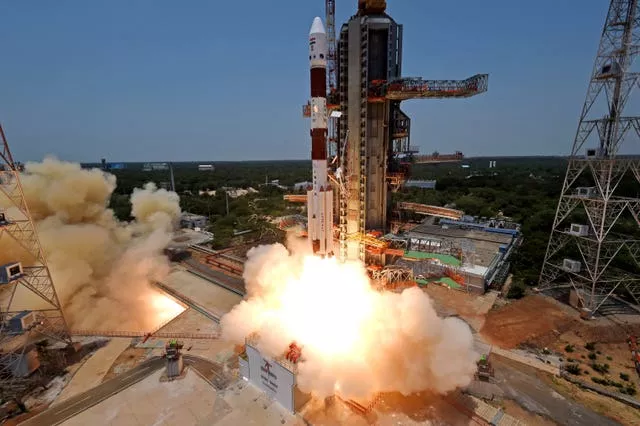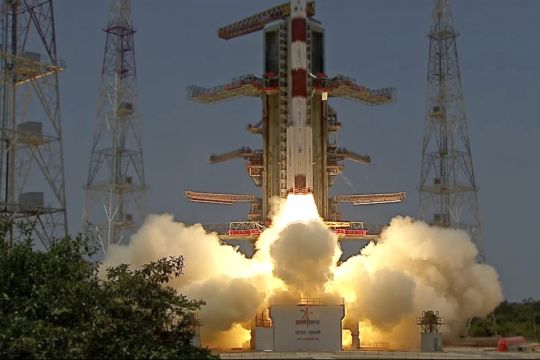India has launched its first space mission to study the sun, less than two weeks after a successful uncrewed landing near the south polar region of the moon.
The Aditya-L1 spacecraft took off on board a satellite launch vehicle from the Sriharikota space centre in southern India on a quest to study the sun from a point about 930,000 miles from Earth, known as L1.
Aditya-L1 started generating the power.
The solar panels are deployed.
The first EarthBound firing to raise the orbit is scheduled for September 3, 2023, around 11:45 Hrs. IST pic.twitter.com/AObqoCUE8I— ISRO (@isro) September 2, 2023
The spacecraft is equipped with seven payloads to study the sun’s corona, chromosphere, photosphere and solar wind, the Indian Space Research Organisation (ISRO) said.
After over an hour, ISRO said the launch had been “accomplished successfully”.
“The vehicle has placed the satellite precisely into its intended orbit. India’s first solar observatory has begun its journey to the destination of Sun-Earth L1 point,” ISRO tweeted.
The satellite is scheduled to take 125 days to reach L1.
India became the first country to land a spacecraft near the moon’s south pole on August 23 — a historic voyage to uncharted territory that scientists believe could hold vital reserves of frozen water.
After a failed attempt to land on the moon in 2019, India joined the US, the Soviet Union and China as only the fourth country to achieve this milestone.
Jitendra Singh, India’s junior minister for science and technology, praised ISRO officials for their work on the launch.
“Congratulations India. Congratulations ISRO,” he said at the control room. “It’s a sunshine moment for India.”

The sun study, combined with India’s successful moon landing, would completely change the image of ISRO in the world community, said Manish Purohit, a scientist who used to work for the organisation.
Aditya-L1 is heading for the L1 point of the Earth-Sun system, which gives an uninterrupted view of the sun, ISRO said, adding: “This will provide a greater advantage of observing solar activities and their effect on space weather in real-time.”
Once in place, the satellite should provide reliable forewarning of an onslaught of particles and radiation from heightened solar activity which has the potential to knock out power grids on Earth, said space scientist BR Guruprasad in an article in The Times of India.
Here is the brochure: https://t.co/5tC1c7MR0u
and a few quick facts:
🔸Aditya-L1 will stay approximately 1.5 million km away from Earth, directed towards the Sun, which is about 1% of the Earth-Sun distance.
🔸The Sun is a giant sphere of gas and Aditya-L1 would study the… pic.twitter.com/N9qhBzZMMW— ISRO (@isro) September 1, 2023
The advanced warning could protect the satellites that are the backbone of global economic structures as well as people living in space stations.
“Those seven payloads are going to study the sun as a star in all the possible spectrum positions that we have visible, ultraviolet and X-ray,” Mr Purohit said.
“It’s like we’re going to get a black and white image, the colour image and the high-definition image, 4K image… so that we don’t miss out on anything that is happening on the sun.”
Hundreds of people who had gathered to watch the launch cheered as India’s sun mission took off.
Among the spectators, Prakash, who gave only one name, said the launch was “one more milestone” like the country’s recent moon mission.
“This is going to set the bar high for ISRO,” he said.
“We are privileged to be Indian and witness this kind of developmental activities on the space centre for India,” said another onlooker, Sridevi.







